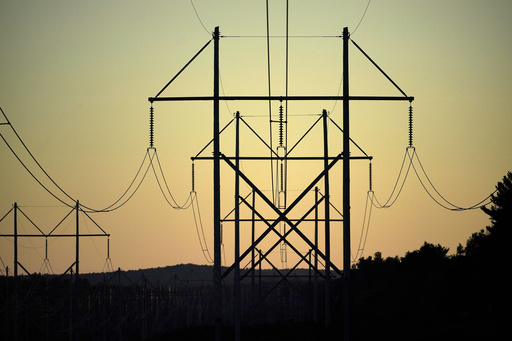The Department of Energy has announced $2.2 billion in funding for eight projects across 18 states aimed at enhancing the electrical grid’s resilience against extreme weather, promoting the transition to cleaner energy, and meeting the growing demand for electricity. This funding will support the construction of over 600 miles of new transmission lines and the upgrade of approximately 400 miles of existing lines to increase their capacity.
Energy Secretary Jennifer Granholm highlighted the importance of this funding, citing the increase in extreme weather events due to climate change that have caused damage to infrastructure and resulted in power outages. The recent impact of Hurricane Beryl in Texas, which left nearly 3 million people without power and led to several heat-related fatalities, underscores the necessity of strengthening the grid.
The investments are expected to provide more reliable and affordable electricity to 56 million homes and businesses. This funding program represents the largest direct investment ever made in the nation’s grid and aims to address the evolving needs of electrified households, businesses, manufacturing facilities, and data centers that are placing greater demands on the grid.
This initiative is part of the Grid Resilience and Innovation Partnerships program, funded through the Bipartisan Infrastructure Law of 2021. The latest round of awards includes projects such as the upgrade of over 100 miles of transmission lines in California to accommodate renewable energy expansion and enhance electricity supply in response to rising demand.
One notable project receiving funding is the construction of a 415-mile high-voltage transmission line in Montana and North Dakota, known as the North Plains Connector. This project will improve the ability to transmit electricity between regions and bolster resilience against extreme weather events and power disruptions.
Furthermore, the Virginia Department of Energy will utilize $85 million to implement clean electricity and backup power solutions for two data centers, setting a new standard for grid-responsive energy consumption. These investments are seen as a positive step towards addressing the challenges of decarbonization and achieving net-zero emissions, according to industry experts.
Looking ahead, research from Princeton University indicates that the U.S. will need to significantly expand its electricity transmission infrastructure by 2030 and possibly triple it by 2050 to support the transition to cleaner energy sources. The funding provided by the DOE aims to support these essential upgrades to the grid infrastructure, ensuring a more reliable and sustainable energy system for the future.


